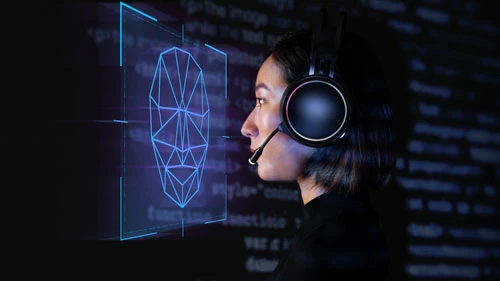With the growth of technology, AI and cybersecurity have engendered questions about threats that may come from the use of artificial intelligence. In trying to get into details on this complex dance, we must analyze and determine whether AI threatens cybersecurity or functions as a beneficial ally. The Dual Nature of AI in Cybersecurity...
Boosted by GenAI in the world of technology, code development has been vastly improved with efficiency without necessarily compromising originality. Nevertheless, behind all the wonders of automated coding stands a silent but important concern - the oversight of weak links within GenAI-created code.
The Promise of GenAI-Generated Code
GenAI's learning tool, which can imitate patterns from vast data sets, has taken the code creation process to never-before-seen levels of speed and complexity. This innovative method seeks to simplify programming, minimize mistakes, and improve overall performance in the field of coding.
Yet, as we delve into the intricacies of GenAI-generated code, a pertinent question arises: Does this advanced technology unintentionally miss weak links in code infrastructure?
Understanding Weak Links in Code
Weak links stand for vulnerabilities, inefficiencies, or potential points of failure that escape direct observation. These weak ties can be security gaps, poor performance, or interoperability issues. In contrast, human coders may demonstrate a natural ability to detect and address such weak linkages, but GenAI driven by data patterns might not display the same degree of discretion.
For example, imagine that a piece of the code requires particular error handling for an unusual edge case. Human coders might draw from experience and foresight to incorporate strong error-handling mechanisms. Nevertheless, since GenAI will not have the necessary experiential context, it might generate code that does not include such finesse handling to introduce vulnerability in its system unintentionally.
The Challenge of Contextual Awareness
One of the intrinsic ambiguities that come with GenAI is its lack of contextual awareness. It is very good at recognizing and replicating patterns from the data it was trained on but may not be great at understanding the broader context of a specific coding assignment. This drawback manifests itself when confronted with complex scenarios or specific needs where human intuition is essential to recognize and manage vulnerable links.
Coding is more than just syntax and structure; it involves an intimate understanding of project objectives and potential obstacles, along with a complex dance between various components. GenAI, although capable of generating code, might not fully understand the comprehensive view needed to detect and eliminate weak links.
The Human Touch: Complementing GenAI's Strengths
The importance of synergy between GenAI and human coders is crucial in pursuing maximally perfected code. Human coders have extensive work experience, analytical thinking capabilities, and the knowledge to support GenAI's strengths. With cooperation with human developers, the code produced by GenAI can undergo a critical review phase, thus allowing weak links to be identified and further strengthened.
In addition, implementing rigorous testing procedures at the development phase becomes necessary. Through rigorous testing, weak links that would otherwise remain overlooked in the code generation stage may be discovered, enhancing security and trust.
The Evolving Landscape: Continuous Improvement
With the development of GenAI technology, overcoming this challenge becomes an inherent part of its evolution. GenAI can keep improving its ability to detect and remove weak links in the generated code by adopting feedback mechanisms, continuous training with various datasets, and a better understanding of context.
Digital ecosystems are highly dynamic and continually introduce new challenges with varying levels of complexity. As an ever-changing tool in coding, GenAI must also adapt to this dynamism by evolving with the changing technology sector.
The best way to take advantage of the full extent of automated coding is through a symbiosis between human intelligence and GenAI-generated code. Although GenAI provides speed and accuracy like never before, the keen eyes of human coders with a sense of circumstantial awareness are incomparable when identifying weak links.
As the technology world changes rapidly, collaboration between GenAI and human coders is not just a choice but an imperative one. In recognizing the subtleties of weak links and striking a balance between automation, GenAI-generated code becomes efficient and resistant to threats.



